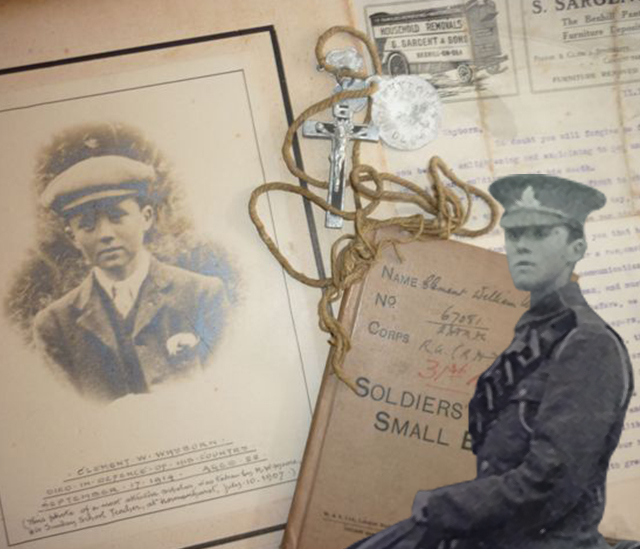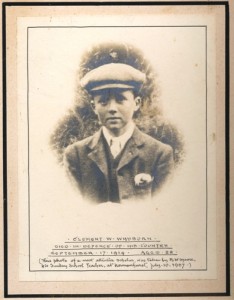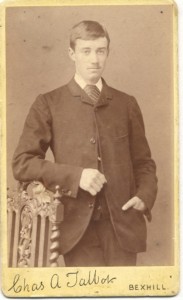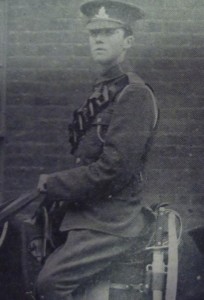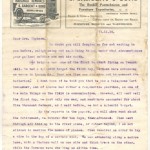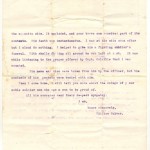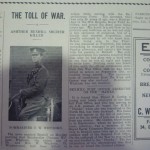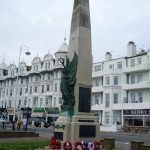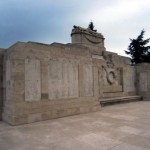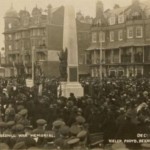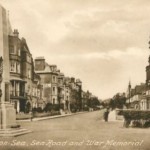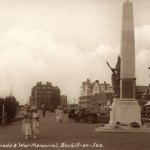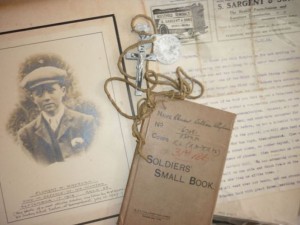
A selection of Clement’s belongings and the letter from William Culver from Bexhill Museum’s Collection
Bombardier Clement William Whyborn was the first Bexhill man to fall during the First World War.
Monday 15th September 2014 marked the 100th anniversary of the death of Bombardier Clement William Whyborn, the first Bexhill man to be killed in action during the First World War. The town had already been affected by the outbreak of war, with military bands cancelling their performances, foreign staff leaving the town’s hotels, visitors cancelling bookings, panic food buying, bread shortages and the local territorials being called up, but Bexhill had not yet experienced the horrors this conflict would also bring. In October 1914, the reports of the first Bexhill losses began to filter through and were reported in the local newspapers.
Clement Whyborn had joined the army on 7th September 1911 aged 19 years old. Before this, he had worked as a tobacconist in Sidley. He served in the 31st Battalion 37th Brigade of the Royal Field and Horse Artillery, and for a short while was stationed in barracks in Woolwich where his sister, Hilda, regularly visited him.
By August 1914, he was serving with the British Expeditionary Force in France as a Telephone Cart Commander and his brigade was one of the first to start firing on French soil. A letter from fellow soldier, William Culver to Clement’s mother, Annie, now in Bexhill Museum’s collection, provides a detailed account of Clement’s final days.
Culver describes how the first day went well with the loss of only one man despite the Germans “advancing en-masse in thousands”. Clement’s job was to maintain communications which included, according to Culver, running out wires to connect batteries together. Culver’s letter continues “We retired for ten days, then advanced. Clem went through all this up to the river Aisne, or rather beyond. I am not allowed to mention the names of places”.
Clement had been ordered to lay a wire to the top of a nearby hill. As Clement and Culver advanced along a narrow lane, with a chateau wall on one side and thick trees along the other, they were under constant shell fire. One shell struck the side of a tree and bounced back with such force that it struck the wall on the opposite side of the lane. As the shell exploded, a large amount of the shrapnel hit Clement, killing him instantly. In his letter, Culver explains how he was quickly by Clement’s side but there was nothing he could do to help his friend. Following his death, Clement was given a “fighting soldier’s funeral… with shells falling all around he was laid to rest”. Prayers were offered by Captain Colville and while listening to these prayers, William Culver was also wounded.
Due to the nature of how deaths were reported and the chaos of battle, Clement’s death was not the first to be reported back home. Instead, in early October, it was the death of Private Frederick Carey of 59 Sidley Street who was killed on the 18th September 1914, who was cited as the first Bexhill casualty. He was followed by Private George Bryant, a cellarman from the Sackville Hotel, who died from his wounds the following day. Clement’s death was eventually reported on the 24th October, although even then there was a discrepancy over the exact date, with some reports claiming he died on the 17th. In the report in the Bexhill Observer, he was described as a “fine specimen of manhood” with a “kindly and cheerful disposition” and was “greatly esteemed by all who knew him”. It also stated that before going to France he had managed to get home to Bexhill one Sunday afternoon to spend a few hours with his parents.
Clement was just 22 years old when he died on 15th September 1914. Although William Culver’s letter states Clement was given a soldier’s funeral, his final resting place remains unknown. His name is on the La Ferte Sous Jouarre Memorial at Seine et Marne in France. The name of fellow Bexhillian Frederick Carey is also among the names of the 3,740 men from the British Expeditionary Force who are commemorated on the memorial, who died during the battles of Mons, Le Cateau, the Marne and Aisne, between the end of August and early October 1914. Clement is also remembered on the Bexhill Town War Memorial on the seafront.
A collection of Clement’s belongings and William Culver’s letter can currently be seen on display at Bexhill Museum, as part of the Bexhill Remembers exhibition.
This story was contributed by Claire Eden, Bexhill Museum. Images are courtesy of Bexhill Museum unless otherwise stated.
Additional photographs:
- Clement William Whyborn (Bombardier): Letter from William Culver to Clement’s mother (page 1/2)
- Clement William Whyborn (Bombardier): Letter from William Culver to Clement’s mother (page 2/2)
- Bexhill Observer Article, 24th October 1914
- Bexhill Town War Memorial
- La Ferte-Sous-Jouarre Memorial (c) CWGC
- Unveiling of Bexhill War Memorial – Dec 12th 1920
- Bexhill War Memorial
- Central Parade c.1925

